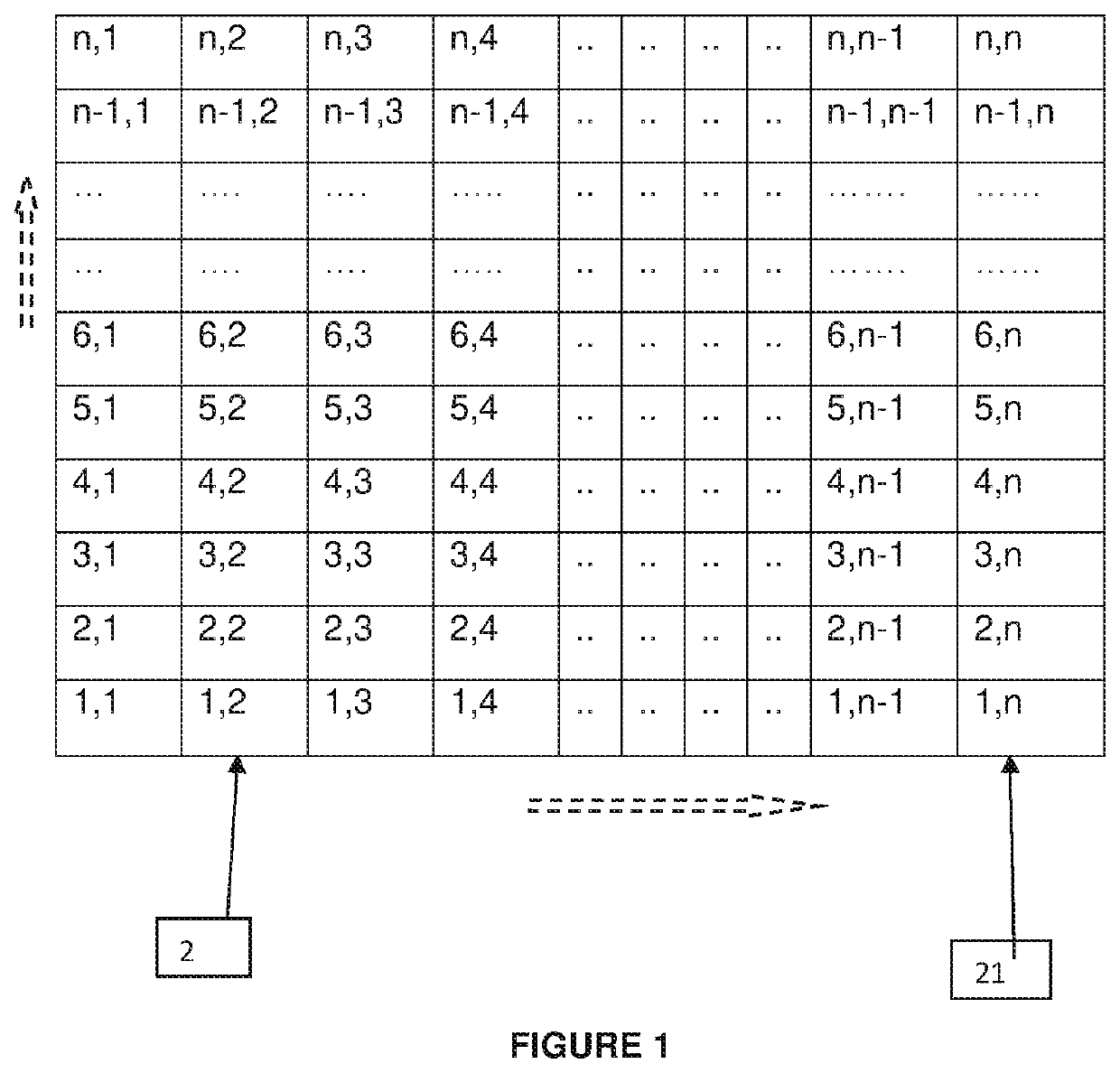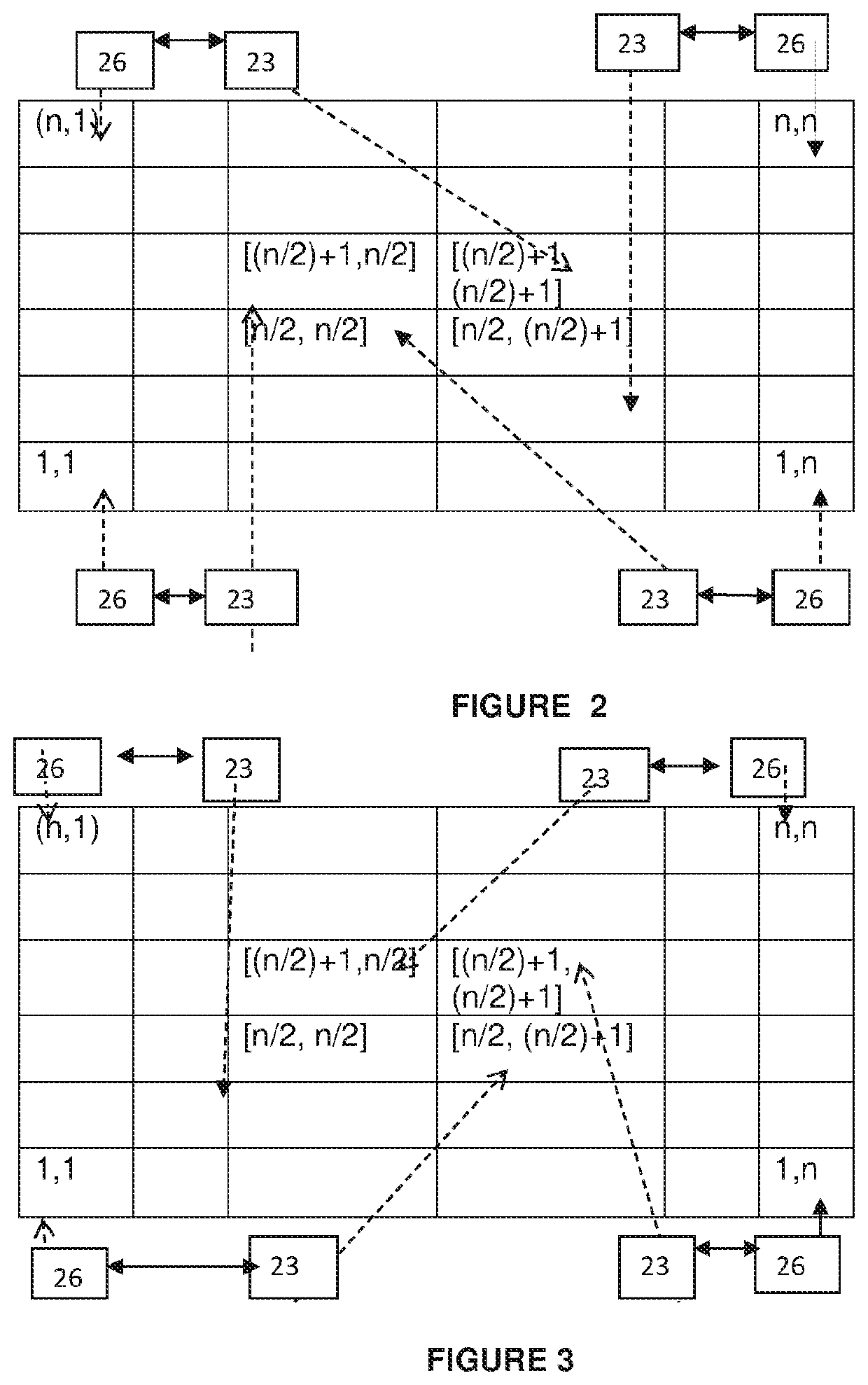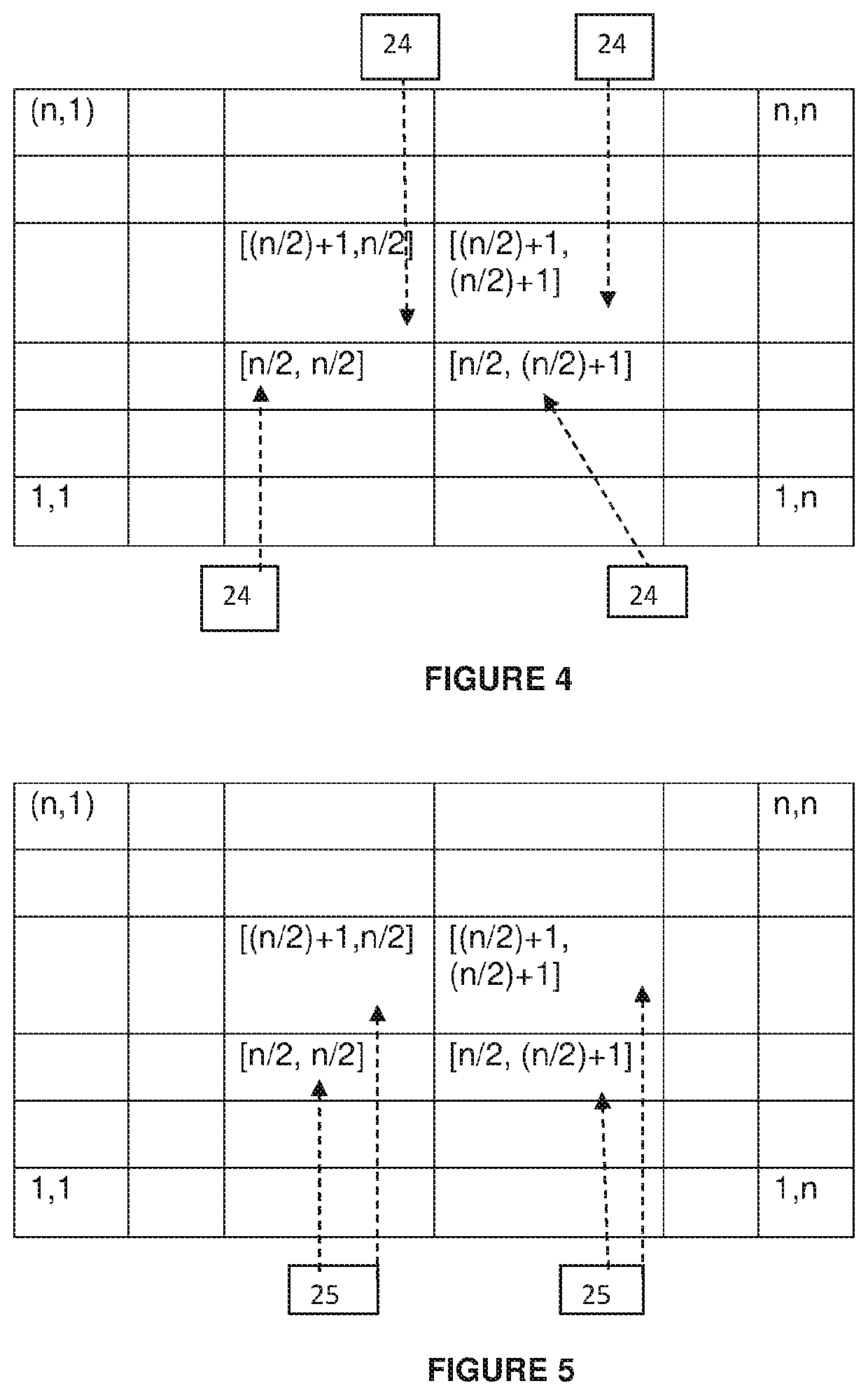Cognitive training and play device, for familiarizing squares, square roots and prime numbers
- Summary
- Abstract
- Description
- Claims
- Application Information
AI Technical Summary
Benefits of technology
Problems solved by technology
Method used
Image
Examples
example 1
[0066]A cognitive training device, for familiarizing squares, square roots and prime numbers in the range 1-100 is disclosed. The playing board in FIG. 12 has a matrix of 10×10 that divides the said playing board into 100 equal subunits ranging from [1, 1] to [10, 10].
[0067]Further, there is an anticlockwise path that starts from the center subunit denoted by 1 and end at the last subunit denoted by 100. Though in this particular example anti-clockwise path is adapted, in alternate arrangement the path can be clockwise also.
[0068]After the subunit denoted by 100 is the HOME which is not a part of the matrix. Along the path, every subunit is denoted by a particular number that is sequentially obtained while moving from the center subunit denoted by 1 to subunit 100 in a particular chosen direction such that the succeeding subunit is always adjacent to the preceding subunit and is also in the direction of the chosen path.
[0069]In this example the center is [5,5] and the path is anticl...
example 2
[0074]A cognitive training device, for familiarizing squares, square roots and prime numbers in the range 1-81 is disclosed in FIG. 21. The rectangular playing board (2) in FIG. 21 having a matrix of 9×9 that divides the said playing board into 81 equal subunits ranging from [1, 1] to [9, 9] is disclosed. Further, two parallel diagonals (28,28′) incorporating within them the squares of even numbers ranging from 2 to 8 and squares of odd numbers ranging from 1 to 9 respectively is shown. All pairs of square and square root (29) are marked in FIG. 21. Multiple pairs of prime numbers (30) by connecting the subunits marked with prime number are also marked in FIG. 21.
[0075]In this case, game pieces were used as differentiating marker pieces. Further, it also has an instrument to generate random numbers wherein a number coining device was used. In this example the center subunit marked by 1 is positioned at [5, 5] and the subunit marked by 2 is positioned at [5, 6]. Further, the path is ...
PUM
 Login to View More
Login to View More Abstract
Description
Claims
Application Information
 Login to View More
Login to View More - R&D
- Intellectual Property
- Life Sciences
- Materials
- Tech Scout
- Unparalleled Data Quality
- Higher Quality Content
- 60% Fewer Hallucinations
Browse by: Latest US Patents, China's latest patents, Technical Efficacy Thesaurus, Application Domain, Technology Topic, Popular Technical Reports.
© 2025 PatSnap. All rights reserved.Legal|Privacy policy|Modern Slavery Act Transparency Statement|Sitemap|About US| Contact US: help@patsnap.com



